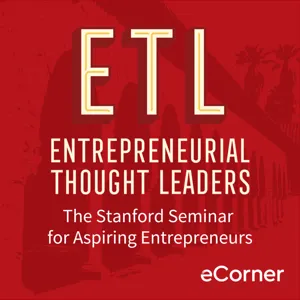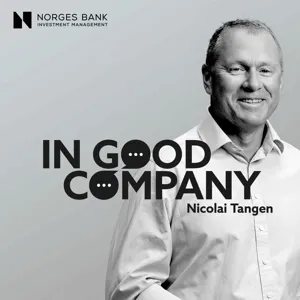Podcast Summary
Understanding the Power of Culture in Leadership: Culture shapes our perspectives and interactions, especially in leadership roles. Understanding cultural differences is crucial for effective communication and decision-making in a business context.
Culture plays a significant, often invisible role in shaping our perspectives and interactions, even at the highest levels of leadership. Michelle Gelfand, a cross-cultural psychologist, shares her personal experiences of culture shock and how they led her to a career studying this powerful force. She emphasizes the importance of understanding cultural differences, especially in a business context, and how these differences can impact communication and decision-making. The episode also invites listeners to share their own experiences with MBA-holding bosses and the impact on their workplaces. The underlying message is that by acknowledging and appreciating cultural differences, we can foster better understanding and collaboration in our increasingly interconnected world.
Cultural differences in policy-making and international relations: Understanding cultural differences is essential for successful policy-making and international relations. The US, with its individualistic culture, faces unique challenges when implementing policies in countries with different cultural norms, as seen in the case of Michael Faye's caning in Singapore.
The US, despite its global influence, is culturally unique and cannot simply adopt policies from other countries without considering the cultural differences. The US's individualistic culture, which has driven its success, also creates challenges for those who don't fit the mold. The case of Michael Faye's caning in Singapore illustrates the stark cultural differences between the US and Singapore. Understanding these cultural differences is crucial for effective policy-making and international relations. The Freakonomics Radio episode explores these differences further, highlighting the concept of tight and loose cultures and what it means to be "weird" in a cultural context.
Measuring Culture: Tight vs Loose: Michelle Gelfand's research categorizes cultures as tight or loose based on societal adherence to social norms. Tight cultures have clear expectations and disapprove deviations, while loose cultures are permissive. Examples of tight cultures include Pakistan, Malaysia, and India, while the Netherlands, Australia, and Brazil are loose.
Culture, as described by scholars, is the social learning and information we acquire as a result of growing up in different environments. It includes values, beliefs, absorbed ideas, and behaviors. Culture can be challenging to measure, leading to vague or ideological discussions. However, Michelle Gelfand's research focuses on measuring culture by categorizing it as tight or loose, based on how strictly societies adhere to their social norms. Tight cultures have clear expectations and strongly disapprove of deviations, while loose cultures are more permissive. This analysis reveals that countries like the Netherlands, Australia, and Brazil are loose, while Pakistan, Malaysia, and India are tight. However, it's important to remember that these labels are overall measurements, and there is significant variation within countries. Ecological and historical factors, such as chronic threat, can influence the evolution of cultural norms and values. For instance, countries that have faced frequent natural disasters or invasions tend to develop stricter rules to coordinate and survive.
Cultural tightness and looseness impact society: Loose countries foster innovation and creativity but can be less compliant, while tight countries prioritize compliance and community spirit, affecting various aspects of life including financial markets and public health
A country's cultural tightness or looseness significantly influences various aspects of its society. The US, being a loose country, is known for innovation and creativity, but can also be more permissive and less compliant during normal times. However, when faced with threats, even loose countries like the US can tighten up. Conversely, tight countries like Singapore have low COVID-19 case numbers due to strict compliance and community spirit. While these differences may seem minor, they have profound effects on everyday life, from financial markets to public health. For instance, tight countries tend to have more synchronized stock markets and stricter regulations on noise and littering. Cross-cultural psychologist Michelle Gelfand emphasizes that these visible indicators are just the tip of the iceberg, and it's the underlying cultural values that shape a society in meaningful ways.
Loose vs Tight Cultures: Understanding the Dynamics: Loose cultures foster creativity, innovation, and openness but may lead to less coordination and self-control. Tight cultures offer more coordination and self-control but may limit innovation and tolerance.
Cultures can be categorized as loose or tight, each having its unique advantages and disadvantages. Loose cultures, such as the US, foster creativity, innovation, and openness, but may result in less coordination, self-control, and an increase in issues like crime and obesity. Tight cultures, on the other hand, offer more coordination, self-control, and lower crime rates, but may limit innovation, tolerance, and openness to new ideas. Michelle Gelfand's research also highlights that loose cultures may have less stigmatization of differences in race and religion compared to tight cultures. However, it's important to remember that no culture is a monolith, and there are exceptions to these generalizations. For instance, in the context of the US, the melting pot metaphor illustrates the country's unique ability to bring together diverse racial, ethnic, and national backgrounds. In conclusion, understanding the loose-tight continuum can provide valuable insights into the dynamics of different cultures and their societal structures.
Cultural and external factors impact application of loose vs tight cultures: High threat levels and diverse areas with permissive histories lean towards loose or tight cultures respectively. Balance between the two is ideal for organizations and individuals.
Cultural norms and values, as well as external factors like natural disasters and population diversity, can influence the application of loose or tight cultures. For instance, places with high threat levels, like those prone to natural disasters, tend to be tighter, while diverse areas with a history of permissiveness, such as California, can be looser. Looseness and tightness can coexist, and balance is desirable. Organizations like the Navy aim for tight-loose ambidexterity to maintain structure while fostering innovation. At the individual level, understanding one's priorities and negotiating accordingly can help maintain a balance between looseness and tightness. The scientific discipline of psychology, dominated by Americans, is an example of creative looseness leading to global impact.
American culture's unique traits shape idea acquisition: American culture's Western, educated, industrialized, rich, and democratic nature influences how we acquire ideas and shapes our success as a species, but can pose challenges when exporting to other cultures.
American culture, while loose in some ways, is also uniquely "weird" due to its Western, educated, industrialized, rich, and democratic nature. This cultural distinctiveness, as argued by researcher Joe Henrik, shapes the way we acquire ideas, beliefs, and values, and has played a significant role in driving human evolution and our species' success. However, it also poses challenges when trying to export American ideas to other cultures, as the fit between values and institutions is crucial for success. An example of a seemingly universal psychological concept, like the ultimatum game, may not be as applicable to a global audience as one might assume, given the dominance of American and Western perspectives in psychological research.
Cultural context influences economic behavior: Economic experiments show humans behave differently based on cultural context, challenging the 'self-interested' label and emphasizing the importance of understanding unique populations.
The results of economic experiments, such as the ultimatum game, can vary greatly depending on the cultural context and the population being studied. For instance, while college students in Europe and the US often offer around 45% of the total in the ultimatum game, indigenous populations in the Peruvian Amazon offer much lower amounts, around 25-26%. These findings challenge the economist's label of humans as self-interested and less reciprocal, Homo economicus, and suggest a more nuanced understanding of human behavior, which researchers have labeled as Homo reciprocans. However, these results may be specific to certain populations, and researchers must be cautious when generalizing the findings to all humans. The importance of cultural context in shaping economic behavior is a reminder that social scientists must consider the uniqueness of each research population when interpreting their results.
Culture shapes our thinking, behavior, and biology: Culture impacts literacy levels, brain development, perception, conformity, and even genetics, emphasizing the importance of recognizing and understanding cultural differences to prevent misunderstandings and conflicts.
Culture significantly shapes our thinking, behavior, and even our biology. Research by scholars like Joe Henrich reveals that our understanding of a culture is incomplete if we ignore its unique aspects. For instance, cultural differences can impact literacy levels, brain development, and even our perception of visual illusions and sensory experiences. Moreover, cultures influence how we conform to group norms. For example, in the Ash Conformity Test, Americans were less likely to conform to the group's incorrect answer compared to people from other societies. These findings highlight the importance of recognizing and understanding cultural differences to avoid misunderstandings and potential conflicts. Additionally, research suggests that culture shapes our genetics by physically rewiring our brains. Therefore, it's crucial to acknowledge the interconnectedness of culture, psychology, and biology.
Americans value individualism and consistency: Americans prioritize personal freedom and self-expression, and value being true to themselves over conforming to social norms.
Americans place a high value on individualism and consistency. According to a study by professor Rhett Yom Hofstede, Americans are the most individualistic culture in the world. This means that we value personal freedom and self-expression, and we're less likely to conform to social norms for the sake of harmony. Hofstede's late father, a social psychologist, described individualistic societies as having people who are like atoms in a gas, free to move about and explore their individuality. In contrast, collectivist societies are likened to atoms in a crystal, with individuals having a fixed position and expected to stay there. This individualistic mindset is reflected in various aspects of American life, from our love of baseball and jet skis (as humorously depicted by John Oliver) to our emphasis on personal achievement and self-expression. So, in essence, Americans value being true to themselves and expressing their individuality, even if it means standing out from the crowd.






